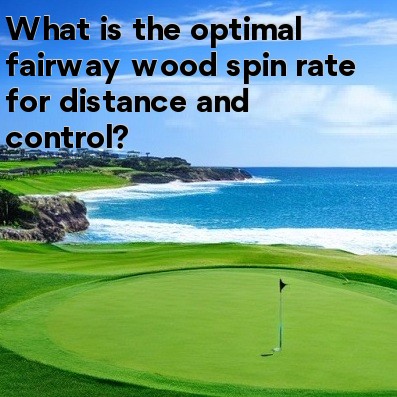
What is the Optimal Fairway Wood Spin Rate for Distance and Control?
Golfers are always seeking the perfect balance between distance and control when it comes to their fairway wood shots. One crucial factor that affects this balance is the spin rate of the golf ball. Achieving the optimal fairway wood spin rate can lead to longer distances and enhanced control over shot shaping. In this article, we'll delve into the importance of spin rate and how it can impact your fairway wood game.
Understanding Spin Rate:
Spin rate refers to the amount of backspin generated on the golf ball during its flight. The spin rate has a significant impact on the trajectory, distance, and control of the shot. A fairway wood shot with too much spin can cause ballooning, resulting in a shorter carry distance, while too little spin can lead to an uncontrollable roll-out after landing.
Factors Affecting Spin Rate:
- Clubhead Speed: A higher clubhead speed typically leads to increased spin rates. However, it is important to note that excessively high spin rates may reduce the overall distance of the shot.
- Angle of Attack: The angle at which the clubhead strikes the ball affects the spin rate. A steeper angle of attack tends to generate more backspin, while a shallower angle produces less spin.
- Clubface Angle: The position of the clubface at impact significantly influences spin rate. A closed clubface tends to create additional spin, while an open face reduces it.
- Golf Ball Characteristics: The design and construction of the golf ball, including its compression and cover materials, can impact the amount of spin it produces.
The Optimal Spin Rate:
The optimal fairway wood spin rate for distance and control can vary depending on the golfer's swing dynamics and playing conditions. However, as a general guideline, a spin rate between 2000 and 3000 RPM (revolutions per minute) is considered ideal for most players.
Distance and Spin Rate:
When it comes to distance, a fairway wood shot with too much spin can result in a shorter carry as the ball reaches its apex and descends steeply. This is known as the “ballooning effect” and can prevent the ball from maximizing its distance potential. On the other hand, a shot with too little spin may launch low and have a greater roll-out after landing, minimizing overall carry distance.
Control and Spin Rate:
The optimal spin rate also plays a vital role in shot control. A fairway wood shot with the optimal spin rate allows for better shot-shaping abilities, as the backspin helps stabilize the ball's trajectory and curving flight path. By manipulating the spin rate, golfers can achieve controlled fades, draws, and straight shots more consistently.
Conclusion:
While the optimal spin rate for fairway wood shots can vary for each golfer, aiming for a spin rate between 2000 and 3000 RPM is a good starting point to achieve the desired balance between distance and control. However, it is crucial to understand that other swing factors and individual characteristics will influence the ideal spin rate. Experimenting with different swing techniques and golf balls can help you find the optimal spin rate that suits your game and helps you achieve the best results with your fairway wood shots.
Remember, finding the perfect spin rate involves trial and error, so don't be afraid to experiment and seek advice from professional instructors to help you refine your fairway wood game.





